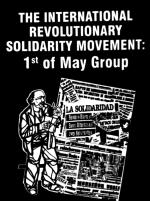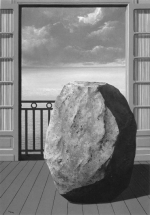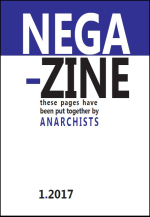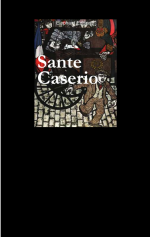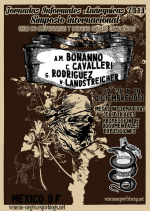Latest entries
Edited by Albert Meltzer
The International Revolutionary Solidarity Movement
A study of the origins and development of the revolutionary anarchist movement in Europe 1945–73 with particular reference to the First of May Group
Once again in history Anarchism is singled out by every reactionary force as its main enemy. World Governments, moving closer together against the common threat of the common people, fear a socialism unfettered by government ties, a class struggle without the limitations imposed by the parliamentary game, a working class without a leadership that aims at imposing authority either by a new dictatorship or by bourgeois parliamentarianism.
Dec 30, 2019 Read the whole text...
Gilles Dauvé
Fascism / Antifascism
The horrors of fascism were not the first of their kind, nor were they the last. Nor were they the worst, no matter what anyone says. These horrors were no worse than “normal” massacres due to wars, famines, etc. For the proletarians, it was a more systematic version of the terrors experienced in 1832, 1848, 1871, 1919 .... However, fascism occupies a special place in the spectacle of horrors.
Apr 6, 2018 Read the whole text...
Alfredo M. Bonanno
What can we do with anti-fascism?
Fascism is a seven-letter word beginning with F. Human beings like playing with words which, by partly concealing reality, absolve them from personal reflection or having to make decisions. The symbol acts in our place, supplying us with a flag and an alibi.
Apr 6, 2018 Read the whole text...
Negazine — 1 — 2017
When reading the following pages it would be well to put everything that we already know about technology aside. Indeed, what knowledge or hypothesis passed off as certainty makes up the scientific aspect of technology? Not much.
Mar 10, 2018 Read the whole text...
A glimpse into the elsewhere Recounted by an anarchist who ventured there for a moment in December 2008
From the moment that 14 year old Alexis Grigoropoulos was gunned down by a patrolling policeman on December 6 2008, the morphology of Greece’s capital city and many others, both on the mainland and in many of the islands, changed. The force of the people’s anger against the State and its paid killers expressed itself with limpid clarity: Athens, a European metropolis, had no cop station left untouched, no bank left functioning. Huge stores, banks and public buildings were gutted by fire and hundreds of luxury cars and car showrooms went up in flames, as the streets were blocked off with flaming barricades and hundreds of police in riot gear were forced to run away from the rebels.
Feb 23, 2018 Read the whole text...
Sante Caserio
24th June 1894, the President of the French Republic Sadi Carnot reached the end of his life in Lyon under the blows of a young Italian anarchist, Sante Caserio.
Feb 23, 2018 Read the whole text...
Alma Melgarito
Anarchism and the Law
Introductory talk at the Days of Informal Anarchy, International Symposium, Mexico D.F., 27, 28, 29 December, 2013.
Feb 17, 2018 Read the whole text...
Series
Fragments
Work in Progress
Anarchist Pocketbooks
Kaleidoscope
Anarchist Pamphlets
Bratach Dubh
Detritus
Drafts
Déjà vu
Insurrection (PDF)
Contact
e-mail: elephanteditions [at] riseup.net
Distributions
In Europe, Elephant Editions are distributed by Active Distribution
In the United States, Elephant editions are distributed by AK Press
In Italy, Elephant Editions are distributed by Edizioni Anarchismo
Other distributions please get in touch.

